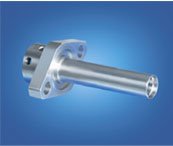Honing for smooth surfaces
PROTEC GMBH Zerspanungstechnik
77716-D Haslach im Kinzigtal
12 Schleifmattstr.
+49 7832 7090
+49 7832 70950
Honing for smooth surfaces
Anfrage an Anbieter senden
-
Select the Right Honing Tool:
- Choose the appropriate honing tool based on the material of the workpiece and the desired surface finish. Different abrasives and grit sizes are available for various applications.
-
Use the Correct Honing Machine:
- Select the right type of honing machine for your specific requirements. There are various types of honing machines, such as vertical honing machines and horizontal honing machines, each suited for different applications.
-
Optimize Honing Parameters:
- Adjust honing parameters such as speed, pressure, and feed rate to achieve the desired surface finish. Experiment with different settings to find the optimal combination for the specific material being honed.
-
Lubrication and Coolant:
- Proper lubrication and coolant are essential for honing operations. They help to control heat generated during honing and improve the efficiency of the process. Coolant also helps to flush away swarf (metal particles) produced during honing.
-
Inspect and Measure:
- Regularly inspect the honing tool for wear and replace it as needed. Use measurement tools, such as micrometers or surface profilometers, to ensure that the desired surface finish is achieved.
-
Honing Fluids:
- Depending on the material being honed, consider using specialized honing fluids. These fluids can enhance the cutting action, reduce friction, and improve surface finish.
-
Proper Workpiece Preparation:
- Ensure that the workpiece is properly prepared before honing. This may include pre-machining operations to remove excess material or achieve a certain shape.
-
Quality Control:
- Implement a robust quality control process to check the surface finish regularly during honing. This ensures that the final product meets the required specifications.
-
Training and Skill:
- Honing is a skill-based operation. Proper training of operators is crucial for achieving consistent and high-quality results. Experienced operators can make adjustments on the fly to optimize the honing process.
-
Safety Precautions:
- Follow safety guidelines and use personal protective equipment (PPE) when operating honing machines. Pay attention to safety features of the equipment and adhere to recommended safety practices.
Turning
Gridding
Milling



